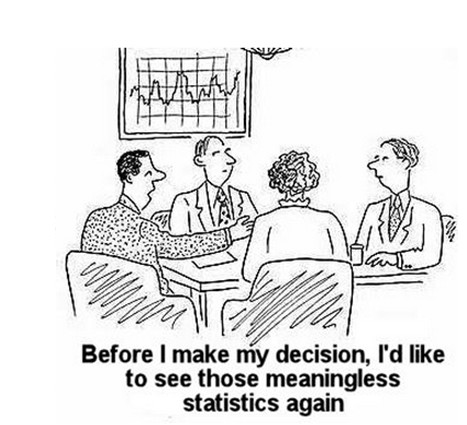In sales and marketing, we at least claim to be very numbers oriented. We have metrics around everything:
Click-throughs
Bounces
Open rates
Time spent on a page
MQL, SQL, SAL
Daily/weekly dials
Daily/weekly conversations/meetings
Demos
Pipeline Coverage
Win Rates
Average Deal/Transaction Value
Sales Cycle Time
Lifetime Customer Value
Renewal Rates
….. I could go on.
There seem to be no end to the metrics we can impose on what we do. There’s a great discussion about whether we are measuring the right things–but that’s the topic of another blog post.
Metrics and the goals we establish are critical. They give us a scorecard–the things we think are important to achieving our goals. They enable us to track progress, to understand where we may be going off track so we can take corrective action.
Sometimes metrics make us think we are “in control,” and sometimes we let the metrics control us. Metrics may seem to make things more Predictable, but often that may be a false positive, not a meaningful indicator of how we are performing.
For example, if we know the number of phone conversations that convert to sales, a conclusion we might draw is that to double sales, we simply double the number of phone conversations.
And if we know the number of emails outreaches it takes to create a phone conversation, to double sales, we can calculate the number of email outreaches.
It’s all a matter of math. We know the formula, so all we do is do the math to figure out how to achieve our goals.
The problem is, it doesn’t seem to be working. 50% of sales people aren’t making their goals. Our marketing programs aren’t producing the results we expect.
Even when things do seem to be working, scaling isn’t necessarily linear, scaling isn’t necessarily achievable (in the time frame we need to scale), and scaling may not be the most effective thing to do if we want to grow.
A simple example: If I want to double our sales, and I have a reasonable CPOD, I simply double the number of sales people. Math works. But here’s where the challenges come in. For example if I want to move from 100 to 200 sales people, what does it take to find the right 100, how long, what resources do I have to invest in to find them? What do I have to put in place to onboard them, what resources do I put in place to support them on an ongoing basis, what investment do I have to make in additional marketing to support them…….
All of a sudden we find the model we thought was so simple, isn’t achievable. Complexity ramps up, costs ramp, performance may ramp, but not at the rate the formula suggested.
While the math is simple, the execution isn’t that simple. Now all of a sudden, because the execution changes, the formulas change. Previously, math was our friend, but now it doesn’t work because the formulas have changed–and we don’t know them.
And that’s the issue, we have by blindly applying the formulas and doing the math. When the formula changes, we no longer produce the results we need.
Here’s where it gets interesting. A lot of time, we control the formula. We can change the formula–shifting the numbers in our favor. Rather than just accepting the formulas, we can actually engineer them to produce better results.
For example, what would we have to change to get better response/open rates? What would we have to change to improve average transaction value? What would we have to do to improve win rates?
Our customers, unwittingly, are changing the formulas, as well. Their business needs and priorities are changing, so the things they used to want and need are no longer important. They have different sources to learn new things. Their behaviors shift. So the formulas we used to predict their behaviors no longer work, or if they do, they aren’t producing the volumes we need.
Of course, we needn’t worry, we have the promise of AI to fix this. We don’t have to think, we don’t have to do the math anymore, AI does it for us.
But that’s the problem, AI works because we train it to work, we train it to recognize the things we think are important to produce the answers we want. But if we train it wrong, it produces the wrong results–at a stunning rate.
Even if we train it correctly, it is identifying things that enable us to engage our customers differently, more effectively, we still have to execute. Yet we don’t seem to have developed the formula for effective execution.
We seem to have ignored what it takes to develop the formulas, to continue to test them, to refine and improve them. We seem to have abandoned observing, critical thinking, experimentation, changing, adaptation.
Math is powerful. Math works, always, but are we making it work as we intend it to work.
Perhaps, I should move this discussion to include a treatise on imaginary or irrational numbers…… But I suspect we know enough about this already. (Pardon the math humor, the geeks in the audience are rolling on the floor, laughing.)

Humans can only handle so many metrics (7-10) effectively. Humans can only handle so many (50ish) B2B relationships. How we leverage technology and automation have to be validated by the customers perspective then we adapt and adopt it based on what works for them. We must ask the customer continuously and be agile to that.